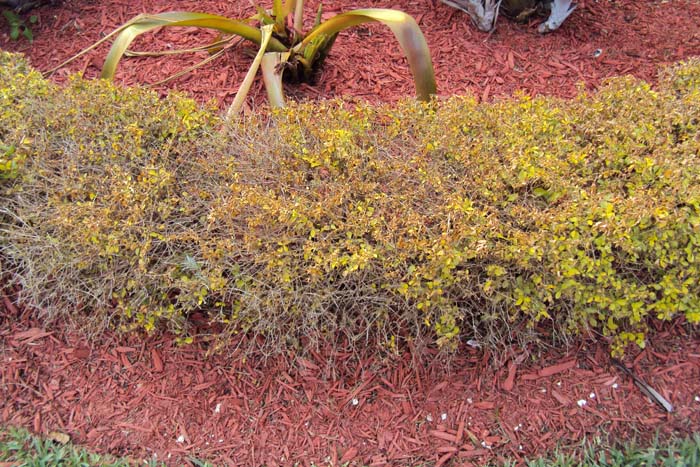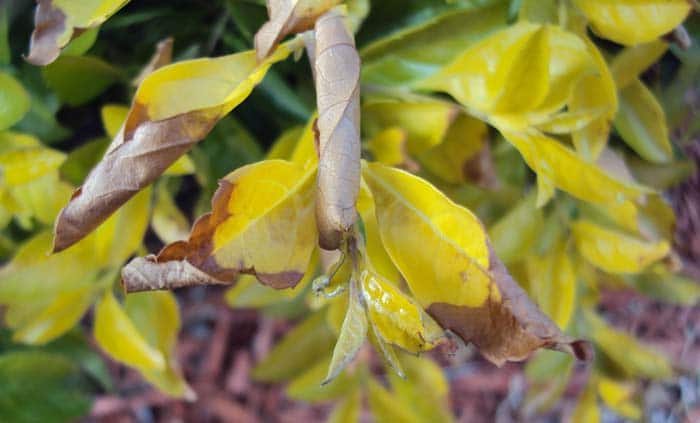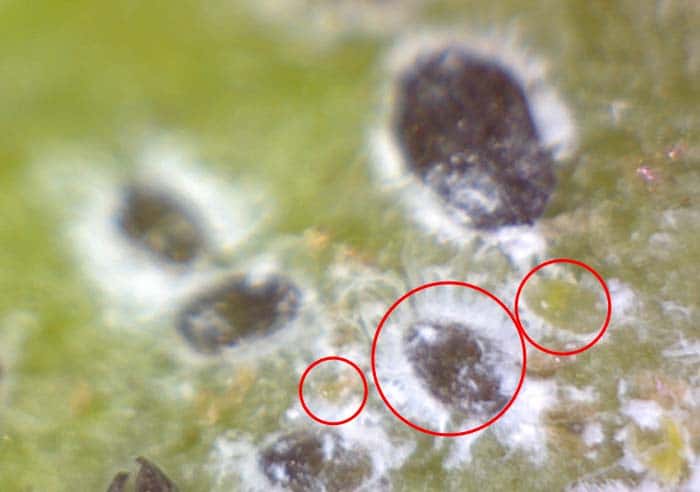Duranta is one of those special and rare plants here in South Florida because it is one of the few plants that can be used as a hedge that has color combinations. But it isn’t without its problems one of which is severe infestation of whiteflies, I will show you two methods for controlling and preventing whiteflies on duranta.
How to get rid of Whiteflies on Duranta
Duranta, known by its various names such as Duranta Gold Mound or Cuban Gold Mound derivatives are gold mound, Cuban gold, and Duranta however its scientific name is (Duranta erecta).
There are between 17 and 36 different species of Duranta worldwide. However the most popular one here is Duranta erecta, it is thought to be a native of the Florida Keys, but more likely it was brought here from Mexico or South America.
Duranta erecta has many problems that affect it other than whiteflies, it suffer from Anthracnose Disease a pathogen that affects the leaf tissue which have to be treated with a fungicide when it acures, also they are attacked by Root-Knot Nematodes these are little round microscopic worms that penetrate the roots causing root damage, to which right now there is no treatment available, more on this in another post.
I first had real problems controlling whiteflies on Duranta in 2006, back then we were spraying the whiteflies on a rotation program by rotation I mean we used a different pesticide with a different mode of action to avoid pesticide resistance issues. We sprayed every 2 months until we started noticing we couldn’t control them on a 2 month program, we switched to a 1 month spray program, we switched from contact insecticide pyrethroids like Bifenthrin or Talstar which are fine products and are still used today, to local leaf systemic insecticides like TriStar that translocates through the leaf tissue through the stems to other leaves that might not have come in contact with spray, very high tech and very expensive at the time a gallon was over $1,000, we tried using it with non nonionic surfactants. We got control but not for more that 2 to 3 weeks and then we started all over again.
We soon realized this was not sustainable. The biggest problem was the pest pressure, this is the amount of that pest in one area. We worked primarily in what are known as cookie cutter communities hoa’s or home owners association, this species of duranta was planted by almost everyone so we would treat one home but the next door neighbors durantas was less than 30 feet away, these whiteflies are transient and when the residual from the pesticide was gone in came the flies again. This was a vicious cycle.
We had to do something this was costing us a fortune, the customers expected us to have an answer, my answer was “pull them out and burn them”, for the customer that wasn’t an option and some would say “what else can we put there that’s like it” the answer nothing, this is the only plant like it that has those color changes and people loved them and they still do in spite of all the inherent problems and my repeated pleas not to plant them, they die and people replant them, some have given up and now plant Cottoneaster with no known problems yet.
We decided to start treating them systemically at the roots, mind you this was before the ficus whitefly epidemic and the Gumbo limbo Whitefly fiasco. Trying to explain this treatment to customers was like trying to explain penicillin injections for the first time.
oh you’re not going to spray them they would say, no we are going to pour it on the roots and the plant will take it up and when the insect sucks on your leaf it dies, so the insect will still be on my plant they asked, well yes but it won’t cause any damage to it since the nymphs are the ones that cause most of the damage not the adults mostly just lay the eggs. Oh ok then, leaving with a this will never work look on there face.
So we started doing the root drench treatments and lo and behold it was working like a charm, until about 3 to 4 months later and the flies where back, so we retreated it and 3 to 4 months later they were back again, we spoke to entomologist and pathologist and read all their work and no one has doing any trials with systemics on duranta anywhere in the world that we could find.
What do you do now? Nothing this is the way imidacloprid is treated by the plant no matter how much you add it’s still 3 to 4 months of control kind of the same way it behave in Gumbo Limbo. That’s how we came up with our protocol we treat every 3 months with the lowest dose required by the label. We also fertilize along with our treatments. In the industry this is called R&R Research and development which a glorified term for Trial and Error. Save yourself the frustration we already paid that price for you.
We use and recommend Dominion 2L Systemic Insecticide/Termticide the active ingredient is Imidacloprid and it is labeled for lawn, shrub and tree systemic treatments as well as perimeter treatment for the control of general household pests. Don’t go looking for it at your home improvement store they sell a lower dose labeled for over the counter you will have to buy 14 of those bottles to get the percentage of active ingredient in one bottle of Dominion 2L at 1/14 the cost. There are also many Imidacloprid products with the same active ingredient and concentration percentage on the market but they are not labeled for lawns and garden, they are only labeled for Termites. Whats the difference nothing except you violate Federal EPA laws if you use them for a purpose not on the label. Don’t go to jail over this mistake!
Dominion 2L is a professional strength pesticide so please read all the label directions and take all the recommended precautions.
For Fertilizer we use and recommend Nitro+K 22-0-16 nitrogen and potassium which will green it up and allow its roots do be stronger due to nematodes damage.
Application
Use the lowest dosage on the label for shrub application, use 8 oz of water per foot height of shrub. This is done by measuring the height of the shrub in feet and then multiplying it by the dosage recommended and the same goes for the chemical, you have to treat each shrub individually.
To Purchase Dominion 2L or for more information, label and MSDS Click Here.
Although Franklin Hernandez is a licensed and certified pest control operator in Florida The following recommendations should not be taken as profession pest control training. Consult the structural pest control regulatory agency of your state prior to use of this or any pest control product.
Remember make this application every three months as a preventive treatment for beautiful pest free durantas.
Have a pest free day,
Frank















